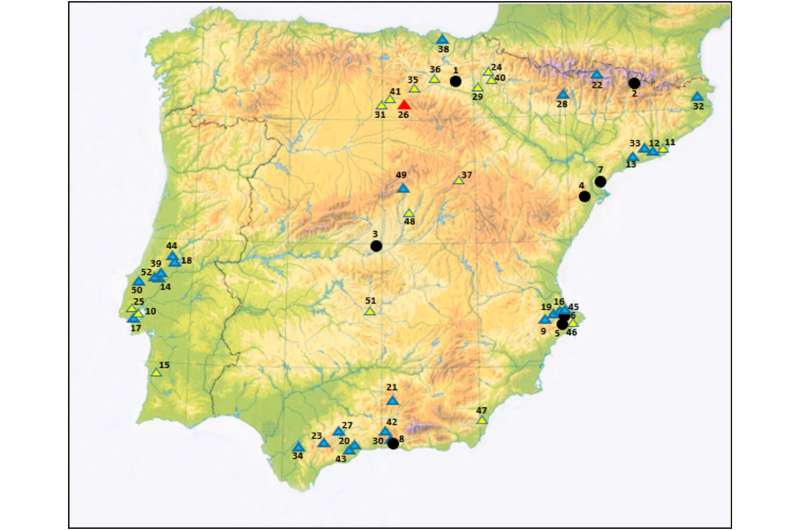August 16, 2023 report
This article has been reviewed according to Science X's editorial process and policies. Editors have highlighted the following attributes while ensuring the content's credibility:
fact-checked
peer-reviewed publication
trusted source
proofread
13-year-old girl found in Iberian cave was an Early Neolithic pioneer, predating funerary traditions by 1,000 years

Research led by the Universidad de Alcala, Spain, has revisited Early Neolithic human remains found within the Galería del Sílex cave in Spain's Sierra de Atapuerca cave system.
In a paper, "Early Neolithic human remains from Galería del Sílex in Sierra de Atapuerca, Burgos, Spain," published in Quaternary Science Reviews, the team details their analysis of the site, fossils, and context of the remains to untangle the story of the individuals found there.
Humans utilized the Galería del Sílex cave over thousands of years. The cave contains 53 panels of engravings and red and black cave paintings, thousands of human and animal remains, dozens of fire hearth remnants, and fragments of ceramic vessels.
Just as the Bronze Age was ending, the cave entrance was sealed, creating a time capsule that remained intact until its discovery in 1972. Initially, the remains and artifacts were all thought to be from the Bronze Age, but over the years, a more complex picture emerged.
In the decades after discovery, around 2,700 human remains from different cave areas were collected. In addition, numerous hearths and remains of strategically located torches, more than 6,000 ceramic fragments (a minimum of 336 vessels), tools, flint, a polished axe, and 341 animal remains (primarily rabbits) were collected.
Five individuals' remains were discovered within the cave in two deep chasms, Sima A and Sima B.
Sima B
In Sima B, three individuals are deposited within the vertical shaft, with the positioning and context of the remains suggesting intentional placement. One individual (I-1) is found to have all of the skeletal remains accounted for, indicating it was placed in the chasm directly after death.
The others are not as complete and could have been relocated to the shaft from another location. The authors point out that there is some difficulty in reconstructing this location based on the available photographs of the original excavation.
Sima A
Two individuals and six ceramic vessels, later attributed to the Early Neolithic era, were recovered from the depths of Sima A. Earlier interpretations of the two individuals were of an ill-fated pair of Bronze Age cave explorers who got lost and fell into the 15-meter-deep recess of the Sima A features. However, the presence of Neolithic ceramics is indicative of an older, intentional placement. The authors suggest this intent aligns with the tradition of leaving ceramic vessels as funerary offerings in Neolithic burials ~5,000—6,000 years ago.
One of the individuals (I-5) was forensically determined to be female, ~age 13 at her death. Her remains were found gathered and complete, placed against a far wall of the chasm floor with the six ceramic vessels nearby.
The other remains (I-4) were of an adult male found face down and missing the skeleton's lower half, suggesting that perhaps he had been more of an ill-fated explorer than the rest.
Radiocarbon dating on three of the remains, one from the young girl (I-5) of Sima A and two from Sima B, has placed these remains to the latter part of the 6th millennium BCE, over 7,000 years ago, establishing them as some of the oldest Neolithic human remains ever found in the interior of the Iberian Peninsula. In the case of the 13-year-old girl, it is the oldest Neolithic funerary site by over 1,000 years.
Intriguingly, individual I-4 of the Sima A funerary site is much more recent at ~4,000 years ago, fitting well with the initial excavation interpretation of a Bronze Age spelunker who fell into a bit of bad luck.
More information: Antonio Molina-Almansa et al, Early Neolithic human remains from Galería del Sílex in Sierra de Atapuerca, Burgos, Spain, Quaternary Science Reviews (2023). DOI: 10.1016/j.quascirev.2023.108256
Journal information: Quaternary Science Reviews
© 2023 Science X Network





















